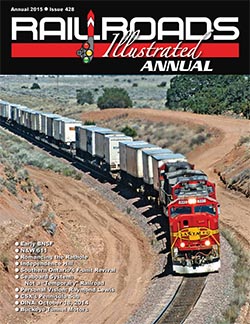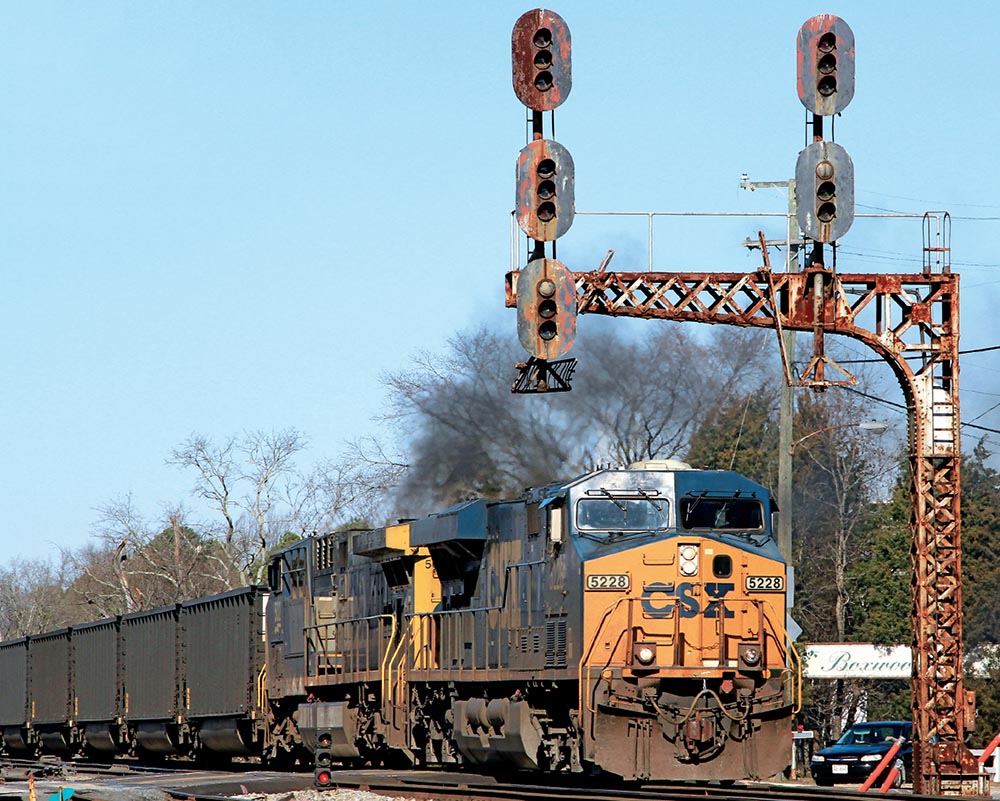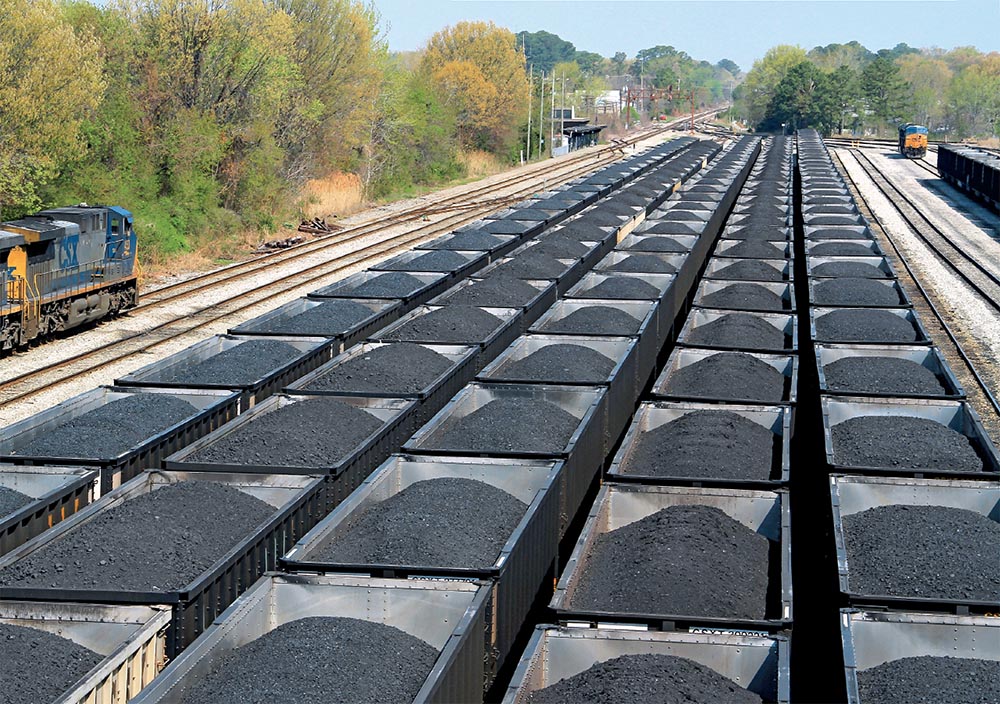 By Ray Lewis/Photos by the author
By Ray Lewis/Photos by the author
Change is present in every facet of our lives; it is inevitable. In my 18-and-half-year Air Force career, I have seen many changes personally and professionally. One example was a major change that moved me across the country when I received new assignment at Langley AFB in Hampton, Va. While the move was based on Air Force needs, it gave me the chance to discover CSX’s Peninsula Subdivision, its coal heritage, and some changes the railroad endured itself. From a Westerner, I found what was most impressive of all was the subdivision’s coal prowess. That prowess dates back to the railway’s inception nearly 134 years ago.
The coal industry began to boom near the end of the 1800s. West Virginia coal production was on the rise, as was the demand to ship it. Chesapeake & Ohio began to search for a suitable port close to the mines to export the coal. C&O already served Richmond at that time; however, James River depth limits prevented large collier ships from reaching these ports. Mild winters, port access, and its close proximity to the Chesapeake Bay and Atlantic Ocean made Newport News a perfect location. Using land that Collis P. Huntington previously purchased in the 1870s, C&O began construction of the line until Richmond was connected to the docks at Newport News, where trains could directly deliver coal to large ships.
Construction began in December 1880 with crews working from both ends. This two-sided approach enabled workers to finish the line quickly. Completed on October 16, 1881, C&O dubbed its new line the “Peninsula Extension.” The line encompassed roughly 75 miles of railway from Richmond to the coal piers of Newport News, Virginia. In its first year, C&O delivered roughly 255,000 tons of coal to the ports at Newport News. During 2013, CSX delivered an astounding 28.76 million tons. Advances in both the railroad and coal industry have enabled CSX to move coal tonnage that C&O could never have dreamt of when the railroad and coal piers were built.

CSX delivers today’s tonnage using 100- to 150-car unit coal trains (typically 150 cars). At the port, one of two coal terminal operators unloads the trains: Kinder Morgan or Dominion Terminal Associates. Each terminal empties the unit trains by tandem rotary dumpers in about four hours and promptly returns the empty hoppers to CSX for the trip back to the coalfields. Meanwhile, the newly arrived coal rides a system of conveyor belts to one of two 1,000-ton storage silos, where it is weighed and sampled. From there, another conveyor belt moves the coal to the ship or into storage. Conveyor belts, dozers, and reclaimers manage the storage piles. Prior to all ship loading, the coal enters one of two outbound silos, where it is blended according to customer need. One final weighing, and then the ship is loaded.
It is hard to grasp the scope of 28.76 million tons of coal. How do you put it to scale? Well, mathematically, one hopper delivers about 120 tons, which means it took 239,666 hoppers to fulfill 2013’s coal demand. Visually, photographing coal trains along the Peninsula Subdivision for a few months, you will see what seems to be nothing but coal trains. But honestly, for me it was not until I discovered vantage points from the Mercury Boulevard overpass and the coal ports themselves at Newport News where coal’s dominance became prevalent. From the overpass, there are days where, no matter which direction you look, coal hoppers are visible as far as the eye can see. In the coal ports, enormous piles of coal 80 feet high dwarf the coal hoppers delivering it. These vantage points showcase the railroad’s coal prowess…


